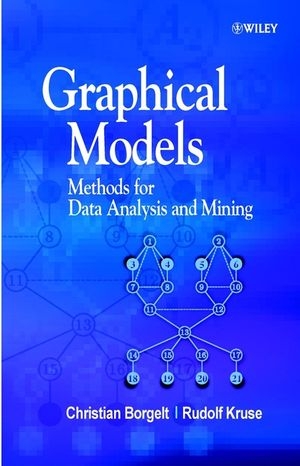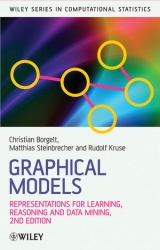
Graphical Models
Methods for Data Analysis and Mining
Seiten
2002
John Wiley & Sons Inc (Verlag)
978-0-470-84337-6 (ISBN)
John Wiley & Sons Inc (Verlag)
978-0-470-84337-6 (ISBN)
- Titel erscheint in neuer Auflage
- Artikel merken
Zu diesem Artikel existiert eine Nachauflage
Graphical models are a marriage between probability theory and graph theory. A graphical model is used to represent a complex system by combining simpler parts, and probability theory provides the glue whereby the parts are combined, ensuring that the system as a whole is consistent.
The concept of modelling using graph theory has its origin in several scientific areas, notably statistics, physics, genetics, and engineering. The use of graphical models in applied statistics has increased considerably over recent years and the theory has been greatly developed and extended. This book provides a self-contained introduction to the learning of graphical models from data, and is the first to include detailed coverage of possibilistic networks - a relatively new reasoning tool that allows the user to infer results from problems with imprecise data. One major advantage of graphical modelling is that specialised techniques that have been developed in one field can be transferred into others easily. The methods described here are applied in a number of industries, including a recent quality testing programme at a major car manufacturer.
* Provides a self-contained introduction to learning relational, probabilistic and possibilistic networks from data
* Each concept is carefully explained and illustrated by examples
* Contains all necessary background, including modeling under uncertainty, decomposition of distributions, and graphical representation of decompositions
* Features applications of learning graphical models from data, and problems for further research
* Includes a comprehensive bibliography
An essential reference for graduate students of graphical modelling, applied statistics, computer science and engineering, as well as researchers and practitioners who use graphical models in their work.
The concept of modelling using graph theory has its origin in several scientific areas, notably statistics, physics, genetics, and engineering. The use of graphical models in applied statistics has increased considerably over recent years and the theory has been greatly developed and extended. This book provides a self-contained introduction to the learning of graphical models from data, and is the first to include detailed coverage of possibilistic networks - a relatively new reasoning tool that allows the user to infer results from problems with imprecise data. One major advantage of graphical modelling is that specialised techniques that have been developed in one field can be transferred into others easily. The methods described here are applied in a number of industries, including a recent quality testing programme at a major car manufacturer.
* Provides a self-contained introduction to learning relational, probabilistic and possibilistic networks from data
* Each concept is carefully explained and illustrated by examples
* Contains all necessary background, including modeling under uncertainty, decomposition of distributions, and graphical representation of decompositions
* Features applications of learning graphical models from data, and problems for further research
* Includes a comprehensive bibliography
An essential reference for graduate students of graphical modelling, applied statistics, computer science and engineering, as well as researchers and practitioners who use graphical models in their work.
Christian Borgelt, is the Principal researcher at the European Centre for Soft Computing at Otto-von-Guericke University of Magdeburg. Rudolf Kruse is Professor for Computer Science at Otto-von-Guericke University of Magdeburg.
Preface.
Introduction.
Imprecision and Uncertainty.
Decomposition.
Graphical Representation.
Computing Projections.
Naive Classifiers.
Learning Global Structure.
Learning Local Structure.
Inductive Causation.
Applications.
A. Proofs of Theorems.
B. Software Tools.
Bibliography.
Index.
| Erscheint lt. Verlag | 6.2.2002 |
|---|---|
| Verlagsort | New York |
| Sprache | englisch |
| Maße | 155 x 231 mm |
| Gewicht | 703 g |
| Themenwelt | Mathematik / Informatik ► Mathematik ► Graphentheorie |
| Mathematik / Informatik ► Mathematik ► Wahrscheinlichkeit / Kombinatorik | |
| ISBN-10 | 0-470-84337-3 / 0470843373 |
| ISBN-13 | 978-0-470-84337-6 / 9780470843376 |
| Zustand | Neuware |
| Informationen gemäß Produktsicherheitsverordnung (GPSR) | |
| Haben Sie eine Frage zum Produkt? |
